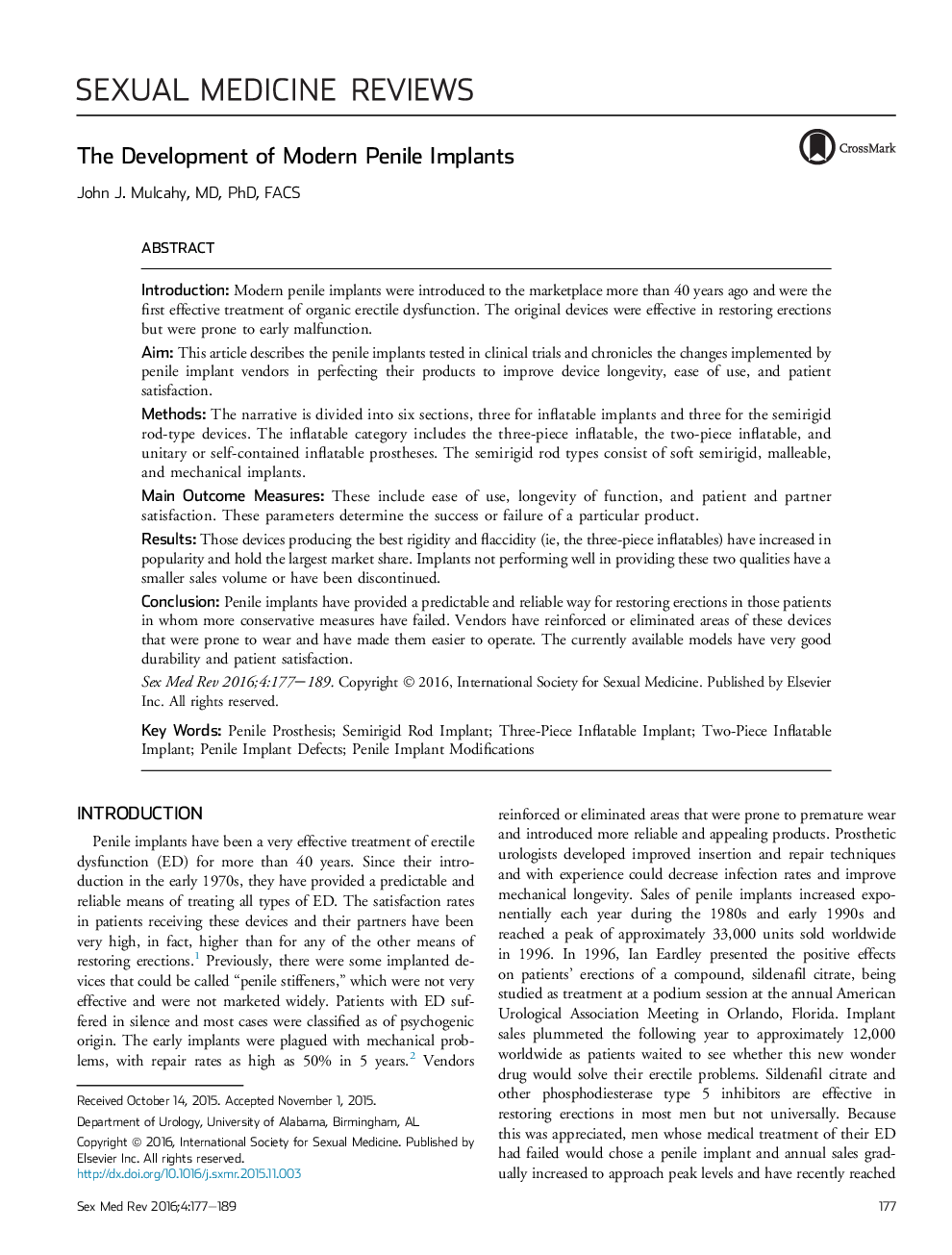| Article ID | Journal | Published Year | Pages | File Type |
|---|---|---|---|---|
| 4274730 | Sexual Medicine Reviews | 2016 | 13 Pages |
IntroductionModern penile implants were introduced to the marketplace more than 40 years ago and were the first effective treatment of organic erectile dysfunction. The original devices were effective in restoring erections but were prone to early malfunction.AimThis article describes the penile implants tested in clinical trials and chronicles the changes implemented by penile implant vendors in perfecting their products to improve device longevity, ease of use, and patient satisfaction.MethodsThe narrative is divided into six sections, three for inflatable implants and three for the semirigid rod-type devices. The inflatable category includes the three-piece inflatable, the two-piece inflatable, and unitary or self-contained inflatable prostheses. The semirigid rod types consist of soft semirigid, malleable, and mechanical implants.Main Outcome MeasuresThese include ease of use, longevity of function, and patient and partner satisfaction. These parameters determine the success or failure of a particular product.ResultsThose devices producing the best rigidity and flaccidity (ie, the three-piece inflatables) have increased in popularity and hold the largest market share. Implants not performing well in providing these two qualities have a smaller sales volume or have been discontinued.ConclusionPenile implants have provided a predictable and reliable way for restoring erections in those patients in whom more conservative measures have failed. Vendors have reinforced or eliminated areas of these devices that were prone to wear and have made them easier to operate. The currently available models have very good durability and patient satisfaction.
